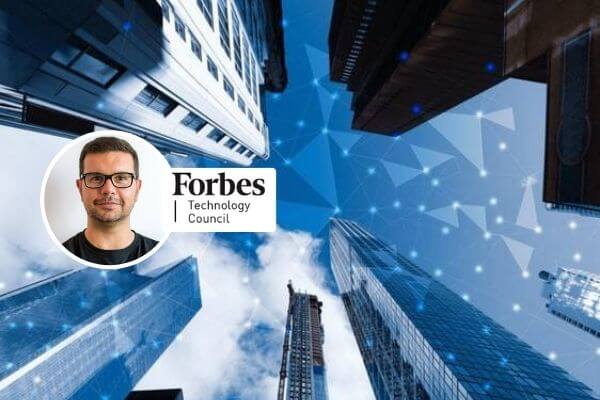Fabio Belloni is Chief Growth Officer and Co-founder of Quuppa and a leading authority on advanced location technologies.
Over the past few years, real-time location systems (RTLS) have emerged as a subject of exploration across various industries. When combined with smart buildings using Internet of Things (IoT) sensors, data analytics and automation, RTLS helps monitor and assess processes and conditions within a building. Companies have been considering RTLS for years, but the emergence of Covid-19 provided an important use case for location technology in buildings, propelling the industry forward.
Experiments using RTLS technologies are taking place across industries, impacting tasks like workflow analysis, resource optimization, security/safety and the user experience. As IoT continues to gain momentum, increasingly more companies are expected to announce plans for adoption.
“The combination of smart buildings and RTLS can enrich the value of technology and asset investments. Together, they can lead to new and valuable insights and capabilities, contributing to advancements in areas including optimizing facilities, asset tracking and worker safety applications in industrial environments.”
Fabio Belloni, Chief Growth Officer at Quuppa
Other uses vary from industry to industry, including monitoring handwashing compliance in healthcare. Case in point, research published in the Journal of Infection Prevention showed that the use of electronic monitoring for hand hygiene improved adherence in hospitals.
The following are some use cases for RTLS that can help provide ideas for your own business when considering implementing the technology.
Health And Wellness
Integrating RTLS with smart buildings can improve operations using automation and enhance essential features within the infrastructure. For instance, RTLS can improve safety in healthcare settings. Not only does it allow healthcare staff to alert for patient assistance when needed, but it can also be set to alert staff if a patient has fallen or gotten out of bed against the doctor’s recommendations.
And, looking at one of the biggest issues right now — Covid-19 — there are a variety of use cases in which RTLS can be incorporated into buildings in support of public health measures. For example, organizations are using it to ensure social distancing among employees. Built-in sensors provide real-time data alerts when a specified area reaches capacity, such as too many people in a conference room. It also facilitates contact tracing through IoT-enabled employee badges that monitor people’s whereabouts inside the building. If a worker should test positive, the system can audit where the person was and who they interacted with (by way of badges) to help with quarantine efforts.
High-Precision Tracking
In addition to potentially improving safety and helping prevent the spread of disease, RTLS can increase efficiency and improve the user experience in factories, warehouses, sports facilities, airports and retail stores. As demand for IoT devices increases, so does the quantity of data being collected. The data is then used to make informed decisions about how buildings are used and where improvements are needed.
Our partner, Zumtobel, is an Austrian-based lighting technology company that provides its customers with asset tracking technology using sensors built into its luminaires. The data generated by RTLS gives the company’s customers a deeper understanding of the consumer journey within their stores, data to improve merchandising and insight into reducing long wait times at checkout. They can measure the flow of customers coming in and out and how much time they spend with specific products. By integrating RTLS into its IoT-enabled lighting, Zumtobel can provide data to its customers to help them optimize the consumer experience.
Smart Buildings
According to research from MarketsandMarkets, the global smart buildings market is expected to grow to almost $109 billion by 2025. Also, according to a Forrester analysis, 80% of organizations will include IoT technology in their return-to-work office plans.
Even before Covid-19, the basic state of a building could have a significant influence on a visitor’s experience. Consider a high-end store with a broken restroom or a restaurant without air conditioning in July. A workplace with flickering lighting or dirty carpets might trigger an unwanted response from employees and visiting clients. The advent of smart buildings minimizes this risk. For example, RTLS can simplify help desk requests by identifying the location and nature of broken software or equipment. In this way, combining smart buildings with RTLS can help improve profitability, identify inefficiencies and create a safer workplace.
The results of research from Gartner indicate that integrating IoT technology into buildings to make them smart drives operating costs down by up to 30%. But the real value of RTLS is not derived from people, places and things. The most salient advantage is that these technologies bring a building to life, offering endless possibilities and making up the heart and soul of a building’s framework.
“The results of research from Gartner indicate that integrating IoT technology into buildings to make them smart drives operating costs down by up to 30%.”
Fabio Belloni, Chief Growth Officer at Quuppa
Did you know?
Quuppa is the leading RTLS platform for indoor positioning
LEARN MORE
This article was first published here: Forbes.com

